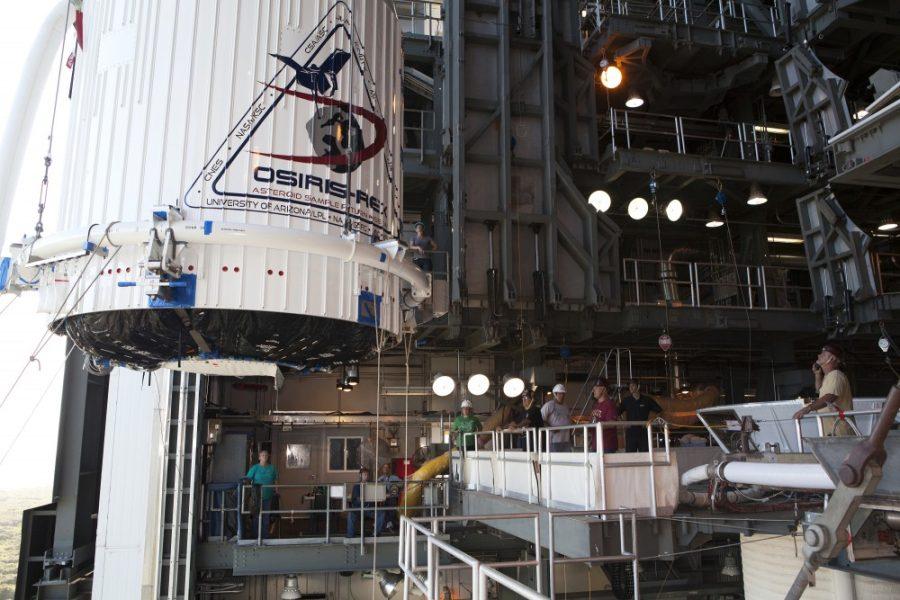OSIRIS-REx, the NASA craft tasked with asteroid sample collection, is one of the University of Arizona’s biggest projects. Several UA scientists are involved in the project, many coming from the Lunar and Planetary Sciences Laboratory.
Dante Lauretta, UA professor of planetary science and cosmochemistry at the Lunar and Planetary Sciences Laboratory, is the principal investigator, meaning he is the leader of the Asteroid Sample Return mission.
The team behind the craft were charged with getting OSIRIS-REx to the asteroid Bennu and gathering samples to undergo rigorous examination for impact hazard and resource potential, as well as physical and chemical properties.
Researchers hope that these samples will help uncover some answers about the formation of our solar system and of planets in general.
RELATED: Tumamoc Hill changes walking hours to attract visitors
OSIRIS-REx was launched on Sept. 8, 2016. Currently, OSIRIS-REx is on track to pass by the Earth on Friday, Sept. 22. Michael Nolan, a senior research scientist at the Lunar and Planetary Sciences Laboratory, said the event, while exciting, will not be easily visible to most.
“We don’t think that it’s going to be bright enough to see with your eyes,” said Nolan, who is also the OSIRIS-REx Science Team Chief.
This event is important for many reasons, according to William Boynton, the Mission Instrument Specialist on the OSIRIS-REx mission and UA professor of planetary sciences. One reason is that it allows the craft to essentially undergo a “check-up,” including alterations in the craft’s path to ensure that it’s heading the right way.
“The purpose of this close flyby of Earth is to use its gravity to deflect our trajectory to tilt it a bit toward the north, so the plane of our orbit intersects the plane of Bennu’s orbit,” Boynton said.
The team will also use this time to ensure that all instruments on the craft are in proper working order before it makes it to Bennu. This is very important, said Nolan, as the instruments gather data necessary to determine the best possible spot to gather the samples. To ensure that it is capable of doing so, the team will be testing the cameras and other equipment on the spacecraft.
“We’re going to take pictures of the Earth and pictures of the moon, partly just to make sure that things are working and partly to calibrate the instruments,” Nolan said.
RELATED: New polymeric sunscreen first of its kind
Boynton said the mission is on track to be completed in September of 2023, with OSIRIS-REx leaving Bennu in March of 2021, samples in tow.
“Currently we are cruising to meet up with Bennu next year,” Boynton said. “We get close enough to begin our observations around this time next year and we arrive at Bennu on December 2, 2018.”
The cameras aboard the craft have taken photos of other far-off asteroids, and a couple of months ago, the team used the spacecraft to search for nearby asteroids.
Those interested can head to the project website to learn more about OSIRIS-REx, its mission and the best spot to place a telescope in order to possibly catch a glimpse on Sept. 22.
NASA also has a social media campaign, “Wave to OSIRIS-REx,” according to its website. The site “invites members the public to mark the occasion” by taking photos of themselves waving to OSIRIS-REx, then tagging it with the hashtag #HelloOSIRISREx and tagging the mission account on Twitter (@OSIRISREx) or Instagram (@OSIRIS_REx).
The website said that the OSIRIS-REx mission, NASA and other mission-related accounts may re-share some submissions, create a mosaic of the photos or aggregate selected submissions.
Follow Nicole Morin on Twitter









